医科学専攻
- Master's Courses
修士課程 - Doctoral Courses
博士課程
Stem Cell Biology and Histology細胞組織学
STAFF
Professor
-
Dezawa, MariProfessor. 出澤 真理 教授
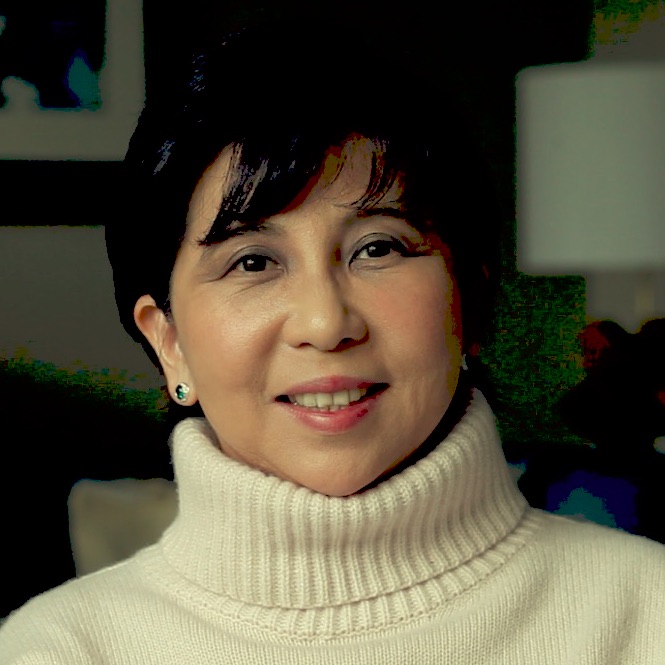
Other Faculty / Staff
-
Wakao, Shohei
Lect. 若尾 昌平 講師 -
Kushida, Yoshihiro
Assistant Prof. 串田 良祐 助教 -
Kuroda, Yasumasa
Assistant Prof. 黒田 康勝 助教
CONTACT
TEL:下記メールアドレスにご連絡ください
E-MAIL:mari.dezawa.e1*tohoku.ac.jp
(「*」を「@」に変換してください)
OUTLINE
Our team discovered Multilineage-differentiation stress enduring (Muse) cells, naturally existing non-tumorigenic pluripotent stem cells distribute in the bone marrow, peripheral blood and connective tissue of every organ as SSEA-3(+) cells. Muse cells exhibit unique characters not seen in other stem cells; 1) Intravenous drip is the main method of administration, making surgical operation unnecessary since they sense damage signals, sphingosine-1-phosphate, to selectively accumulate to the damaged site. 2) they do not need to be “induced” or genetically manipulated to exhibit pluripotency or to differentiate into target cell type, since they spontaneously differentiate into tissue-compatible cells and replace damaged/apoptotic cells. 3) Due to immune privilege, donor-Muse cells can be directly administered to patients without HLA-matching or long term-immunosuppression administration. Allogeneic Muse cells remain in the host tissue as differentiated functional cells for an extended period of time. Clinical trials for myocardial infarction, stroke, epidermolysis bullosa, spinal cord injury, neonatal cerebral palsy, amyotrophic lateral sclerosis and COVID19-ARDS are all conducted by intravenous drip of donor-derived Muse cells without HLA-matching and immunosuppressant treatment. There are basic research subjects yet to be clarified. Since Muse cells are pluripotent, they have potential applications for various diseases. Our laboratory promotes both basic research and clinical application of Muse cells.
我々は、生体に存在する腫瘍性を持たない自然の多能性幹細胞Multilineage-differentiating Stress Enduring(Muse)細胞を発見しました。骨髄、血液、各臓器に多能性幹細胞表面マーカーSSEA-3陽性細胞として存在し、修復幹細胞として機能する細胞です。この細胞は1)傷害組織が産生する警報シグナルsphingosine-1-phosphateを検知し、傷害部位に集積する、2)傷害細胞や死細胞と同一の細胞種に分化することで細胞置換し、組織を修復する。多能性であるため、組織を構成する複数の細胞種に分化が可能である。3)免疫特権を有し、HLA適合検査や免疫抑制剤が無くともドナーMuse細胞は拒絶を免れ、機能的細胞として長期間ホストの組織の中で生存するなど、他の幹細胞には無い特徴を持っております。現在まで心筋梗塞、脳梗塞、表皮水疱症、脊髄損傷、新生児低酸素性虚血性脳症、筋萎縮性側索硬化症、COVID19急性呼吸逼迫症候群への治験が行われ、全てHLA適合検査や免疫抑制剤投与無しにドナーMuse細胞を点滴投与するもので、安全性と有効性が確認されております。Muse細胞には未知の機構があり、また多能性であるため様々な疾患への応用の可能性があります。当研究室ではMuse細胞の基礎的研究と臨床応用の両面を推進しております。
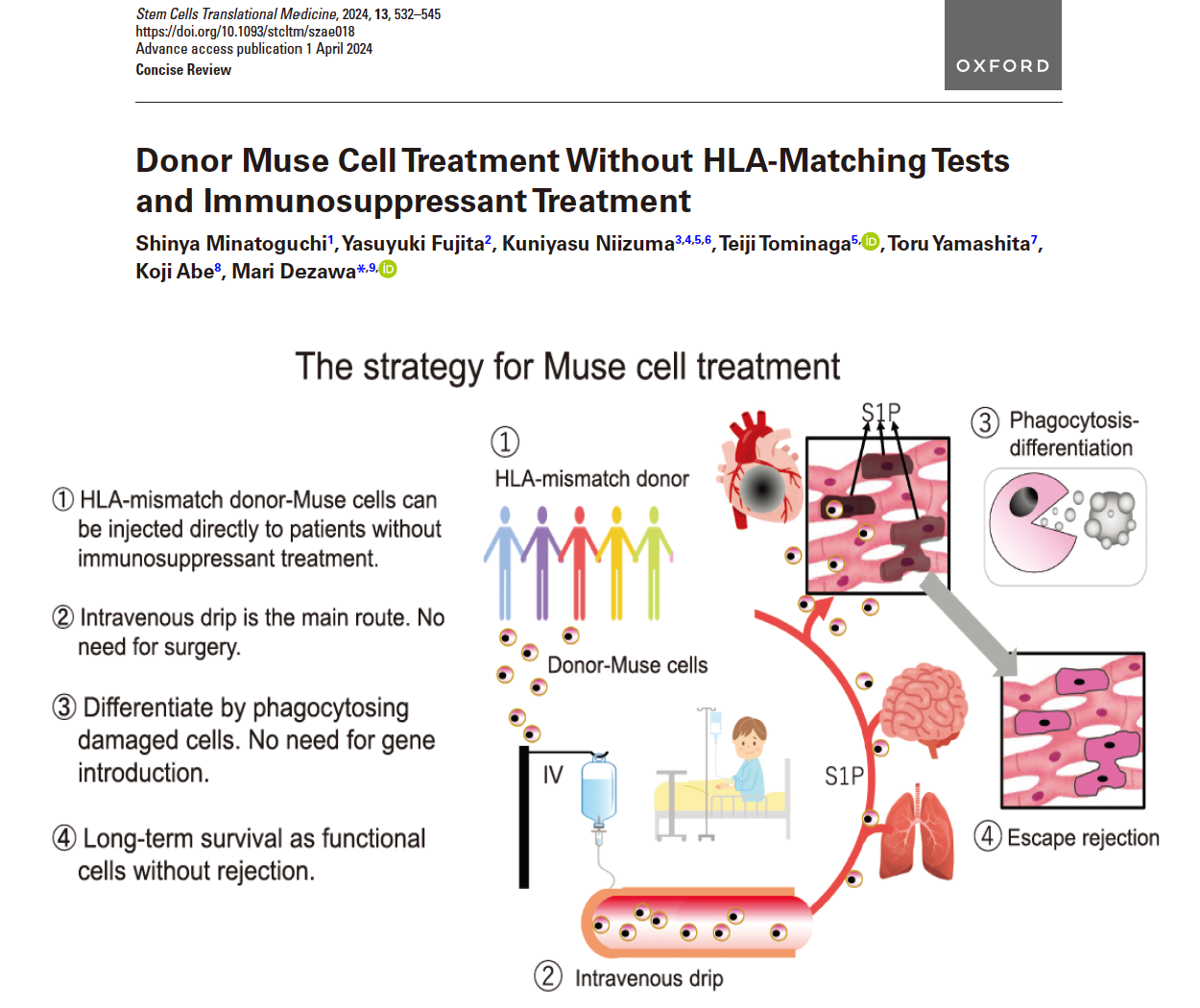
The strategy for Muse cell treatment
Muse細胞治療の戦略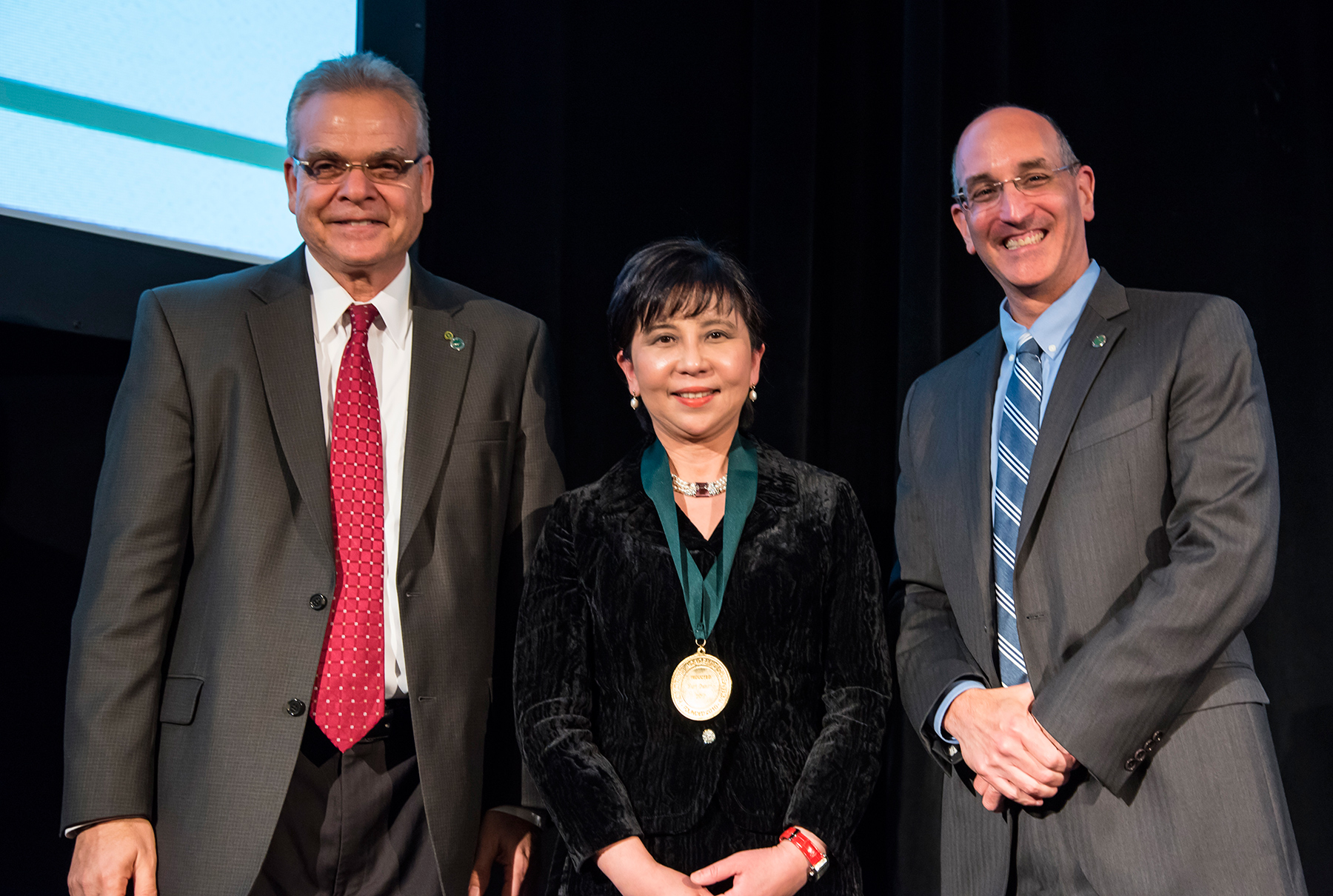
NAI Fellow Induction Ceremony
授賞式の様子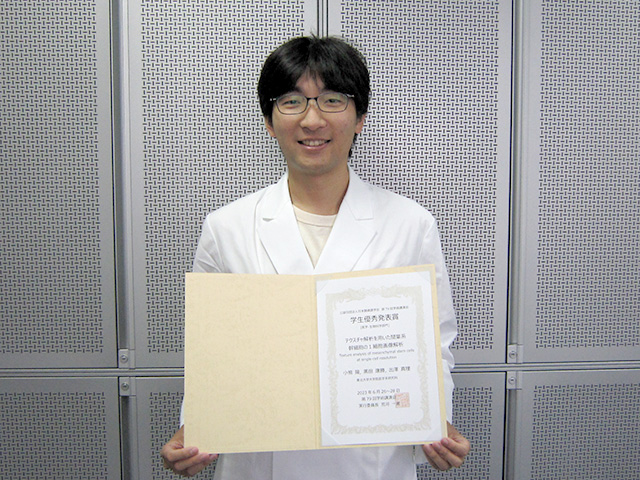
Graduate student Yo Oguma won ”The Award for Student’s Excellent Presentation [Medical and Biological Sciences Session]” in ’The 79th Annual Meeting of The Japanese Society of Microscopy’
大学院生(博士)の小熊陽さんが「日本顕微鏡学会第79回学術講演会」で「学生優秀発表賞[医学・生物科学部門]」を受賞しました。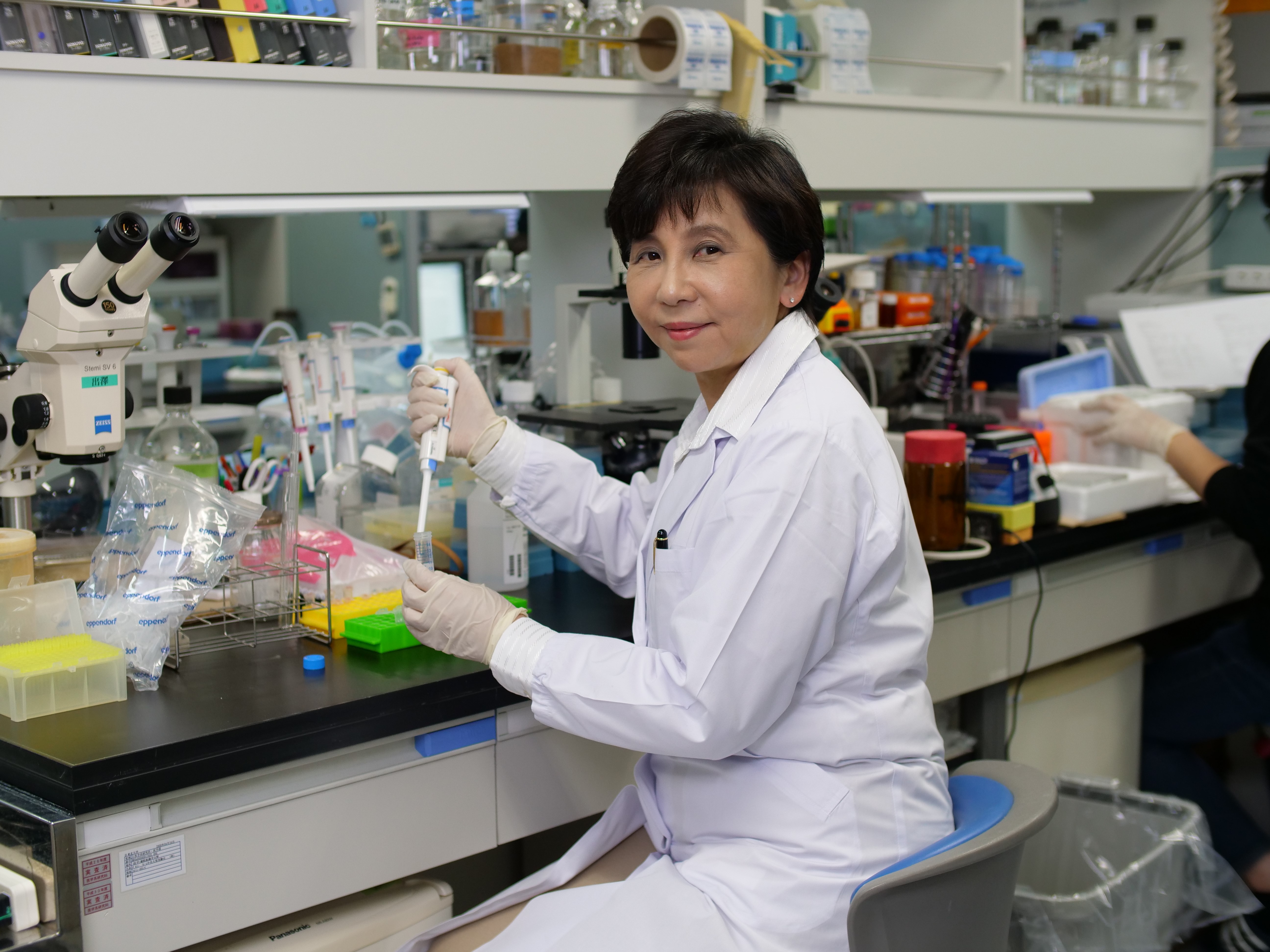
Prof. Dezawa appeared on the TV program ’Jonetsu-tairiku’ broadcasted on January 22, 2023.
出澤教授が2023年1月22日放送の「情熱大陸」に出演しました。
ARTICLE
Minatoguchi S, et. Al Donor Muse Cell Treatment Without HLA-Matching Tests and Immunosuppressant Treatment. Stem Cells Transl Med. 14;13(6):532-545, 2024.
URL:https://www.ncbi.nlm.nih.gov/pmc/articles/PMC11165166/
Wakao S, et al. Phagocytosing differentiated cell-fragments is a novel mechanism for controlling somatic stem cell differentiation within a short time frame. Cell Mol Life Sci. 79(11):542, 2022.
URL:https://link.springer.com/article/10.1007/s00018-022-04555-0
Yamada Y, et al. S1P-S1PR2 Axis Mediates Homing of Muse Cells Into Damaged Heart for Long-Lasting Tissue Repair and Functional Recovery After Acute Myocardial Infarction. Circ Res, 122(8):1069-1083, 2018
URL:https://pubmed.ncbi.nlm.nih.gov/29475983/
Kuroda Y, et al. Isolation, culture and evaluation of multilineage-differentiating stress-enduring (Muse) cells. Nat Protoc, 8: 1391-1415, 2013.
URL:https://pubmed.ncbi.nlm.nih.gov/23787896/
Kuroda Y, et al. Unique multipotent cells in adult human mesenchymal cell populations. Proc Natl Acad Sci U S A, 107:8639-8643, 2010.
URL:https://www.pnas.org/content/early/2010/04/23/0911647107

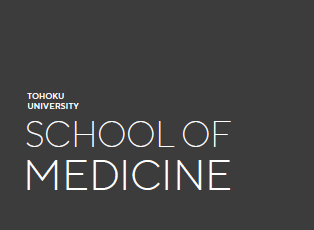 【1/22放送予定】毎日放送(MBS)TBS系列全国ネット「情熱大陸」に細胞組織学分野の出澤 真理 教授が出演
【1/22放送予定】毎日放送(MBS)TBS系列全国ネット「情熱大陸」に細胞組織学分野の出澤 真理 教授が出演
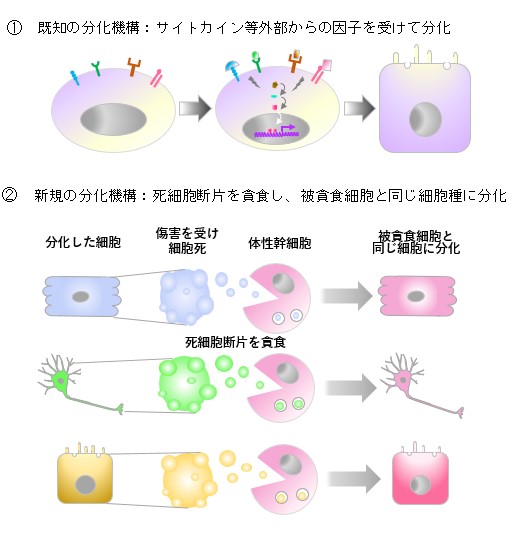 体性幹細胞の分化を迅速制御する新規機構の解明 貪食活性による幹細胞の分化制御
体性幹細胞の分化を迅速制御する新規機構の解明 貪食活性による幹細胞の分化制御